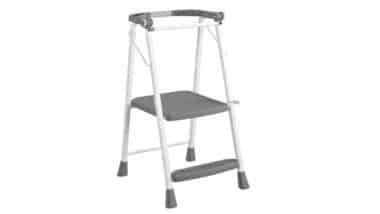 Numerous patients across the United States have reported problems with knee replacement systems that use a bone cement interface, with the components of the device allegedly being vulnerable to aseptic loosening.
Numerous patients across the United States have reported problems with knee replacement systems that use a bone cement interface, with the components of the device allegedly being vulnerable to aseptic loosening.
Aseptic loosening occurs when the implant and bone fail to bond without the presence of infection. Studies show the risk is especially prevalent in high viscosity bone cement.
Aseptic loosening can happen when the bone cement interface fragments and does not properly bond with the bone, which commonly occurs when the implant is attached to the tibia.
According to a 2016 total knee replacement report by the National Center for Biotechnology Information (BNBI), researchers found that high viscosity bone cement may carry an increased likelihood for aseptic loosening. Researchers analyzed 13 cases of patients who had knee replacement systems with a bone cement interface and had failed soon after implementation.
In each of the cases, the implants had detached from the bone soon after implementation or failed to bond to the bone at all along the front side of the tibia. When compared to other bone cement of different viscosity levels, it was found that high viscosity had the highest risk while low or medium variants reportedly gave no indication of debonding.
Aseptic loosening can often be diagnosed with radiographs, which often shows a widening of spaces between bone cement, bone prosthesis, or cement prosthesis. Other aseptic loosening complications that can be seen in radiographs include, but are not limited to:
- Fragmentation or fracture of bone cement
- Migration of prosthetic components
- Bead shedding in porous coated prosthesis
Patients who experience aseptic loosening will often feel debilitating pain, instability, and decreased range of motion. Patients will most likely have to undergo revision surgery, which can be riskier than the initial implant procedure.
Overview of Bone Cement Viscosity Problems
Bone cement is made from a powder and liquid that are mixed together to begin the polymerization process. During the reaction between the solid and liquid components, the cement viscosity increases and is supposed to properly secure the knee implant inside patients. Viscosity refers to how fast the bone cement sets, with high levels being the fastest and low levels being slowest.
Low viscosity cement has a longer mixing phase, which means the bone cement must be applied within the specific time frame instructed on the product’s label. In contrast, high viscosity cement has a shorter mixing process. For this reason, many orthopedic surgeons prefer using high viscosity cement because it is easier to use by allowing for more flexible timing when applying.
The best circumstances for bone cement will have sufficient viscosity that prevents the cement from mixing with blood, fat, or bone from the implant region, but low enough to sufficiently penetrate the bone. However, many cases of high viscosity bone cement patients have indicated this particular level could be dangerous to patients.
It has been alleged that high viscosity cement does not properly bond to the bone which can result in aseptic loosening.
If you or a loved one underwent revision knee replacement surgery or your doctor is recommending revision surgery three years or less after the initial implant and a bone cement was used, you may qualify to file a knee replacement revision surgery lawsuit. See if you qualify by filling out the free form on this page.
ATTORNEY ADVERTISING
Top Class Actions is a Proud Member of the American Bar Association
LEGAL INFORMATION IS NOT LEGAL ADVICE
Top Class Actions Legal Statement
©2008 – 2025 Top Class Actions® LLC
Various Trademarks held by their respective owners
This website is not intended for viewing or usage by European Union citizens.
Get Help – It’s Free
Join a Free Knee Replacement Cement Failure Lawsuit Investigation
If you qualify, an attorney will contact you to discuss the details of your potential case at no charge to you.
PLEASE NOTE: If you want to participate in this investigation, it is imperative that you reply to the law firm if they call or email you. Failing to do so may result in you not getting signed up as a client or getting you dropped as a client.
Oops! We could not locate your form.












